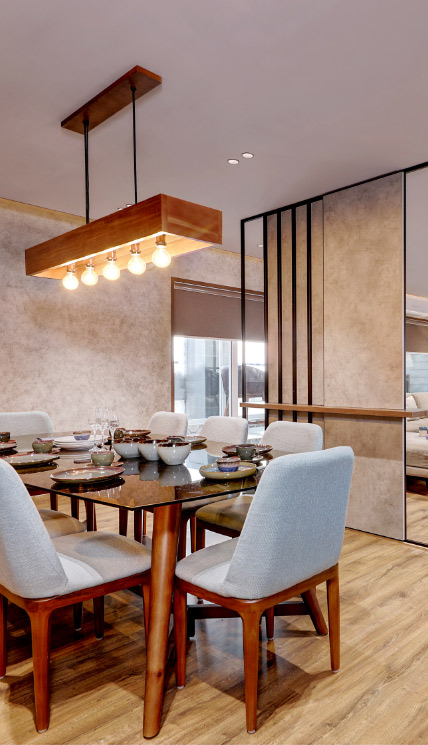Find an expert Architecture Firm to build your vision.
Wiki Article
Transform Your Home With Crucial Principles of Inside Layout and Visual Appeals
The art of changing your home through the essential principles of interior decoration and appearance calls for a thoughtful strategy that integrates shade, balance, and spatial recognition. By comprehending the effect of color concept and the significance of structure and patterns, one can produce rooms that are not just visually attractive but additionally deeply individual. Attaining this equilibrium entails greater than mere design; it incorporates a strategic plan and an eager understanding of how each element interacts within a space. As we explore these fundamental principles, consider how they might redefine your understanding of home and individual expression.Recognizing Shade Concept
Comprehending the principles of shade concept allows designers to create rooms that reverberate psychologically with residents while fulfilling practical demands. Each group plays a crucial role in developing consistency within a room.The psychological effect of colors is extensive; cozy tones such as reds and oranges stimulate power and heat, while cool tones like blues and greens advertise calmness and harmony. Additionally, using complementary shades boosts aesthetic interest, developing striking contrasts that can raise a room's allure.
Neutral colors, on the various other hand, act as a flexible backdrop, enabling other design components to shine. It is necessary to take into consideration elements such as lighting and the area's objective when picking a shade palette, as these can modify the assumption of shades throughout the day.
Ultimately, a well-considered color plan can transform an area, cultivating a feeling of convenience and style that lines up with the inhabitants' choices. Proficiency of shade concept is, consequently, a vital skill for any kind of interior designer intending to develop unified and inviting environments.
Attaining Equilibrium in Design
How can developers accomplish a feeling of equilibrium in their areas? Achieving equilibrium in style is essential to producing harmonious insides.Asymmetrical balance, on the various other hand, depends on varying elements that still accomplish a natural appearance. This technique permits more dynamic and informal plans, offering rate of interest while maintaining stability. By thoroughly choosing differing dimensions, shades, and structures, designers can produce an aesthetically compelling space that feels balanced yet energised.
Radial equilibrium stresses a central centerpiece with components emitting outward. This design is frequently seen in circular layouts, where furniture and style develop a natural border that draws the eye inward.
Ultimately, achieving balance needs thoughtful factor to consider of range, percentage, and the connections in between aspects. interior design firms. By masterfully applying these equilibrium principles, designers can change areas right into environments that really feel both cosmetically pleasing and functionally harmonious, improving the total experience for passengers
Importance of Spatial Recognition

An eager sense of spatial understanding permits developers to determine centerpieces within a space, assisting the customer's interest to essential attributes while keeping a total feeling of unity. It additionally aids in the strategic positioning of illumination, which can drastically influence the understanding of area and state of mind. In addition, recognizing spatial partnerships allows the developer to satisfy the details needs of citizens, ensuring that each location serves its desired function without compromising appearances.
Inevitably, spatial recognition is essential for maximizing the potential of any interior space. By thoroughly considering the interplay in between dimensions, layout, and feature, developers can produce settings that not just fulfill functional needs but additionally stimulate a feeling of comfort and charm, improving the general living experience.
Integrating Texture and Patterns
Welcoming a varied variety of textures and patterns can considerably boost the visual and tactile appeal of an interior area. The calculated use different products-- such as timber, metal, textile, and rock-- creates deepness and rate of interest, making a space really feel much more welcoming and dynamic. Integrating smooth surface areas with harsh appearances can develop a balance that attracts the eye and involves the detects.When including patterns, take into consideration both scale and rep. additional reading Big patterns can function as centerpieces, while smaller, subtle designs can match other components without overwhelming the area. Layering patterns, such as pairing floral paddings with candy striped tosses, adds intricacy and a feeling of harmony if performed attentively.
It is additionally critical to maintain a natural shade combination, making sure that textures and patterns interact instead of complete for interest. By selecting a couple of crucial textures and patterns, you can produce an unified aesthetic that reflects your individual design while boosting the total atmosphere of the area. Eventually, the careful consolidation of these components can transform a mundane area into an advanced environment abundant with character and heat.
Customizing Your Room
Developing a space that shows your personality is important to accomplishing a genuinely inviting atmosphere. Customization in interior layout permits you to infuse your distinct style and interests right into your home, changing it from a mere sanctuary into a sanctuary that speaks with that you are. Begin by picking a shade palette that reverberates with your feelings-- bold tones can invigorate, while soft tones provide harmony.Include art work and style that mirror your interests, whether it be travel, nature, or abstract principles. Presenting individual collections, such as publications, photos, or mementos, can evoke cherished memories and produce focal factors within a room. Furthermore, consider personalizing useful pieces, like upholstered furniture, to line up with your visual choices.

Conclusion
Finally, the transformation of a home through the essential principles of interior decoration and appearance demands a thorough understanding of shade theory, balance, spatial recognition, appearance, and personalization. Each element contributes dramatically to producing an unified and practical living setting - miami luxury interior design. By thoughtfully integrating these principles, people can improve the aesthetic appeal and psychological vibration of their areas, ultimately promoting a home that shows unique identities while supplying convenience and usefulnessReport this wiki page